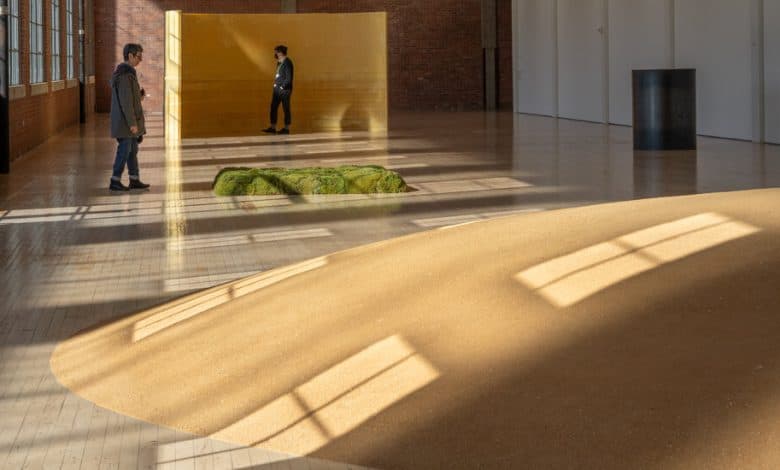Land Art Comes Indoors as Dia Highlights Meg Webster

For many years change came slowly to Dia, and that was by design. Since its inception 50 years ago, the Dia Art Foundation has maintained meticulous long-term presentations of Minimal and Conceptual art from the 1960s and ’70s at its exhibition spaces in Beacon, Chelsea and Bridgehampton as well as site-specific projects around the country. To be an artist with work in its care — a Donald Judd, Michael Heizer, or Richard Serra — was, and still is, to enjoy a form of eternal life.
Recently, however, Dia has been adding to its pantheon of immortals with the aim of increasing the representation of women and artists of color. Last year saw the installations at Dia Beacon of abstract paintings by Mary Heilmann and the water-filled vinyl sculptures of Senga Nengudi, both still on view with no closing date yet given, as well as the opening of a shorter-term exhibition in Chelsea (through July) of Delcy Morelos’s immersive environments of shaped earth.
Dia’s latest effort, a long-term installation of sculptures at Dia Beacon by the 79-year-old New York-based artist Meg Webster, is emphatic though not drastic. It takes up prime real estate in the building, and places Webster in direct and sometimes critical conversation with Serra, Heizer and other formative Dia artists of her generation. And, appropriately enough for spring, it’s a kind of rebirth.
It unfolds along the entire 285-foot length of a stunning gallery adjacent to Dia’s West gardens, where John Chamberlain’s sculptures made from crushed automobile parts had most recently been on view for the 20-year period since the building was inaugurated. Webster’s sculptures, made with soil, beeswax, moss and other outdoor elements shaped into simple geometric forms, interact with Dia’s outdoor landscape and at times seem to pull it indoors. Their placement also sends a message: We are witnessing a shift from industrial materials to natural ones, fabrication to human touch, aggression and violence to healing and restoration.
The eight-foot-high curved barrier “Wall of Beeswax,” for instance, seems to borrow from the formal lexicon of Richard Serra’s overpowering swoops of steel. But it presents an altogether different sensory experience, drawing you in with its sweet scent and golden color and the soft tactility of its layered surfaces.